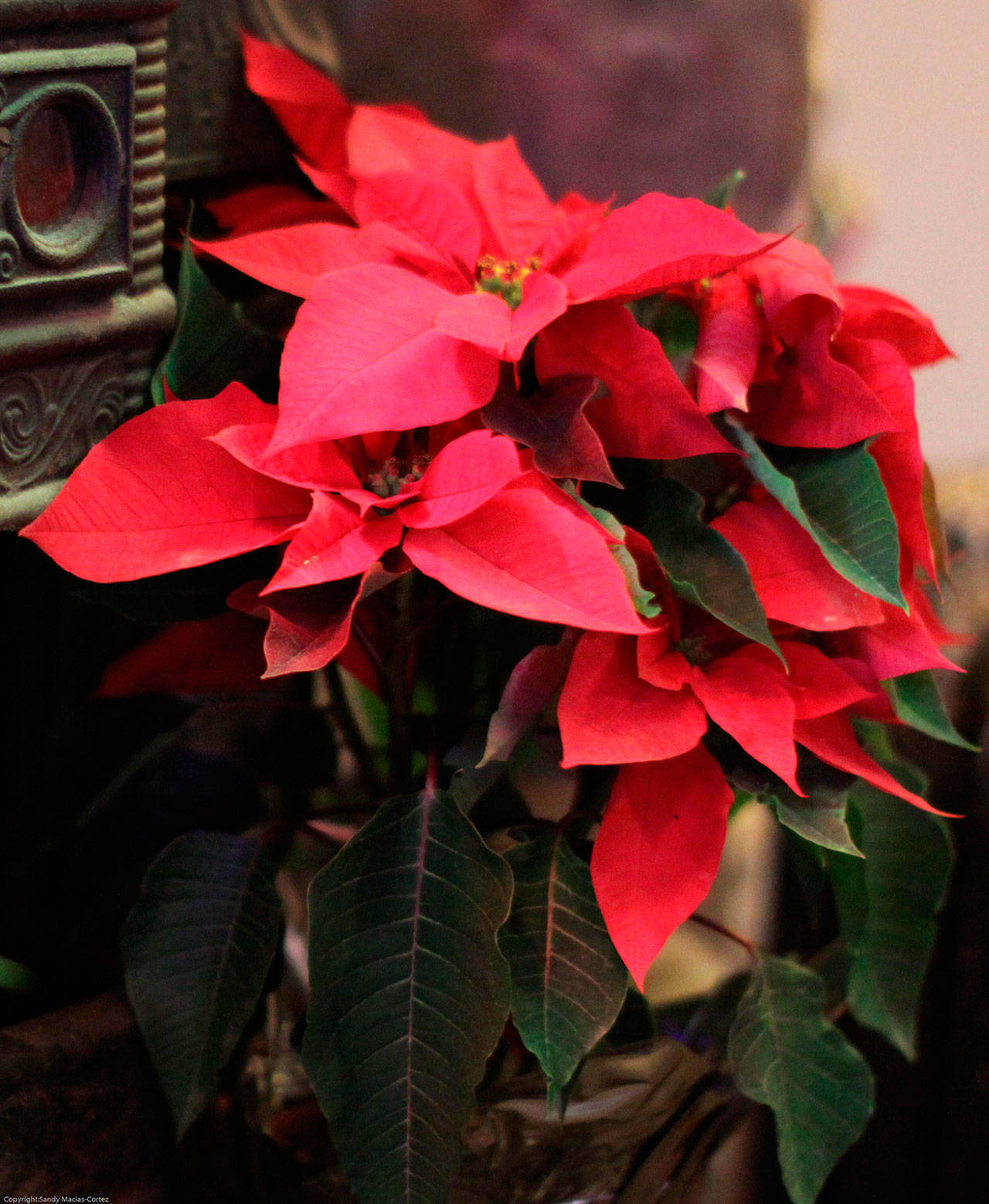Ask a Master Gardener:
Can I get my holiday plants to bloom again?
Many gardeners receive holiday gift plants and are left wondering if they should keep them as houseplants or just toss them at the end of the Christmas season.
Most holiday gift plants make nice houseplants. Many will bloom again but rarely during the holiday season. Here are a few tips to encourage three popular gift plants to bloom around Christmas.
Poinsettia
The poinsettia (Euphorbia pulcherrima) is a shrub native to Mexico and other parts of Central America. The colorful flowers are not flowers at all, but modified leaves called bracts. The yellow cup-shaped structures at the center of the bracts are the true flowers.
During the long days (and short nights) of summer, poinsettia bracts are green. As fall sets in, shorter days (or more specifically longer nights) cause the plant to initiate flowering and development of colorful bracts. On average 10 weeks of long nights (at least 12-hours of darkness) are needed to induce flowering in poinsettias.
If left to its own devices, a poinsettia will likely bloom in January or February, if at all. To force a poinsettia to bloom for Christmas, take the following steps in early fall.
Starting Oct. 1, put your poinsettia in total darkness for at least 12 hours each night. You can place the plant in a cupboard or a closet to achieve complete darkness.
Bring your plant out during the day and place it in a sunny spot. Light during the day is necessary for the bracts to achieve the brightest color.
Continue to expose your poinsettia to long nights until new bracts begin to show color.
If you miss one long night or the night is interrupted with even a few minutes of artificial light, flower initiation will be inhibited. To be successful, set an alarm and move the plants in and out of darkness on a strict schedule.
Amaryllis
The amaryllis (Hippeastrum sp.) is a frost-tender bulb that is native to tropical and subtropical regions of the Americas. In its native habitat, the amaryllis is exposed to nine months of rain, followed by three months of dry weather. During the dry season, the plant enters a period of rest. When the rain returns, the plant produces a rapid flush of growth that is often accompanied by a flower stalk.
To encourage an amaryllis to bloom at Christmas, you need to induce a rest period like the one that occurs in nature in late summer.
Around Labor Day, stop watering and fertilizing your amaryllis.
Put the amaryllis in a cool (50 degrees), dark place for about 6 weeks. Do not remove the bulb from its pot. Do not water it. As the leaves yellow and wither, cut them off at the top of the bulb’s neck.
After six weeks, remove the top one-half inch of soil from the pot and replace it with new soil.
Water the pot thoroughly and place it in normal indoor temperatures. Do not water the pot again until the soil dries, or the bulb produces leaves.
If you are lucky, the bulb will bloom about eight weeks later. Sadly, this method is successful only about a quarter of the time.
A slightly more aggressive approach will double your chances of success but should not be done on an annual basis because it drains too much energy from the bulb and weakens the plant.
To start the rest period, cut back the leaves of your amaryllis to 2 inches from the top of the bulb.
Take the bulb out of its pot and remove the soil. Place the bulb in a cool, dark place.
After six weeks, replant the bulb and water it once thoroughly. Place the pot in normal indoor temperatures. Do not water it again until the soil dries or the bulb produces leaves.
Christmas Cactus
The Christmas cactus (Schlumbergera bridgesii) is a native of the high jungles of Brazil. Like the poinsettia, Christmas cactuses flower in response to the arrival of long nights. They are also affected by cooler temperatures.
To force your Christmas cactus to bloom by Dec. 25, take the following steps in late September or early October.
Stop fertilizing your Christmas cactus and decrease watering.
Move the plant to a cooler room (50 degrees).
Expose the plant to total darkness for 12 hours each night and bright indirect light during the day.
When you see flower buds forming (usually after about eight weeks) move the plant to where you want to keep it for the holiday season. It will take another couple of weeks for the buds to be in full bloom.
Some Christmas cactus owners report their plants bloom in October or November regardless of what steps they take to force the timing of the blooms. It’s likely that the owner is dealing with a different species, a Thanksgiving cactus (Schlumbergera truncata) often sold as a Christmas cactus.
The Thanksgiving cactus does not require as many long nights to produce buds as a Christmas cactus (six weeks versus eight weeks) and naturally blooms earlier. To get a Thanksgiving cactus to bloom at Christmas you will need to extend long days/short nights until mid-October.
Whether forced to bloom during the holidays or allowed to follow its own timing, a holiday gift plant will be beautiful whenever it blooms. So enjoy it!
Jeanette Stehr-Green is a WSU-certified Clallam County Master Gardener.



